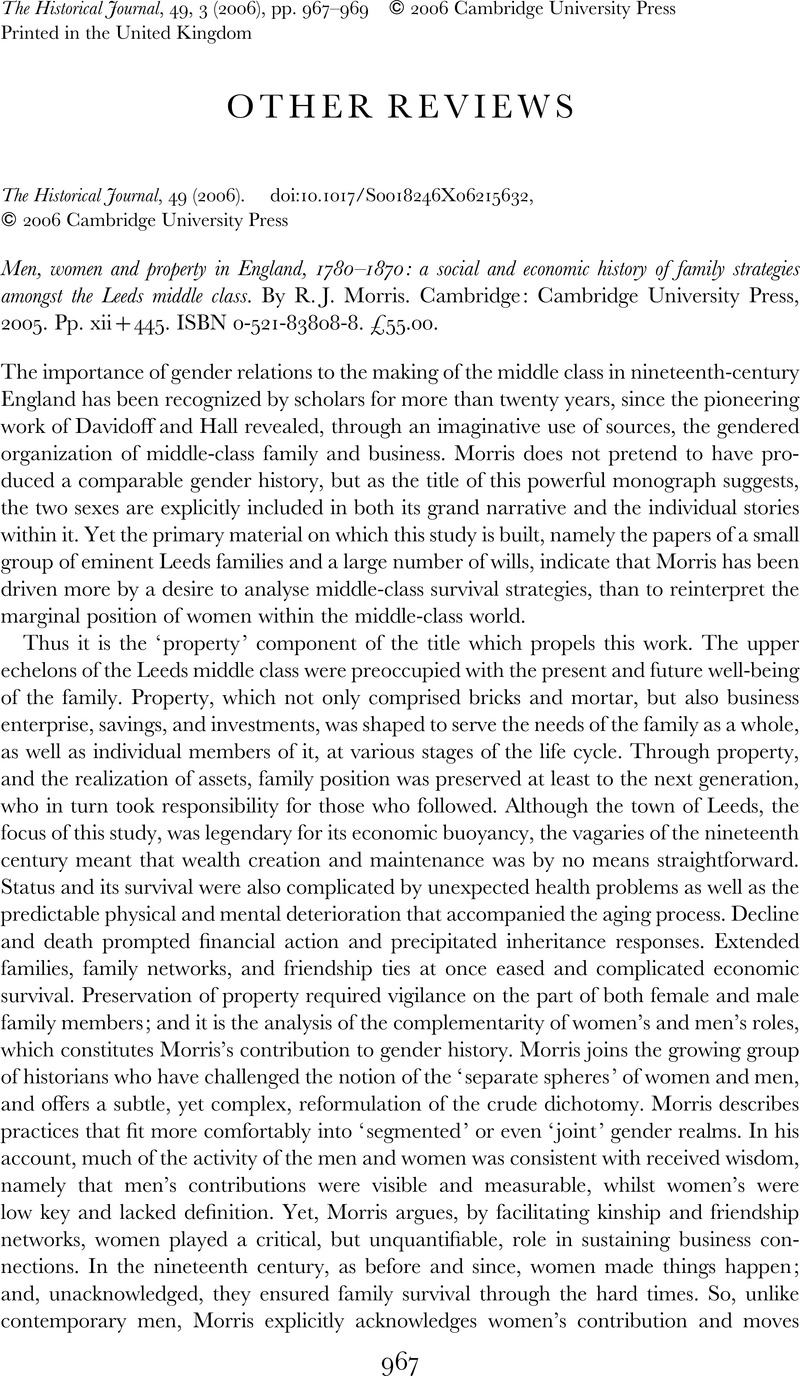Crossref Citations
This article has been cited by the following publications. This list is generated based on data provided by Crossref.
Pokorski, Patryk
Nicewicz, Robert
and
Jeżewska-Zychowicz, Marzena
2022.
Diet Quality and Changes in Food Intake during the University Studies in Polish Female Young Adults: Linkages with Food Experiences from Childhood and Perceived Nutrition Concerns.
Nutrients,
Vol. 14,
Issue. 16,
p.
3399.
Merwid-Ląd, Anna
Szandruk-Bender, Marta
Matuszewska, Agnieszka
Trocha, Małgorzata
Nowak, Beata
Oster, Marie
and
Szeląg, Adam
2022.
Factors That Influence the Use of Dietary Supplements among the Students of Wroclaw Medical University in Poland during the COVID-19 Pandemic.
International Journal of Environmental Research and Public Health,
Vol. 19,
Issue. 12,
p.
7485.
Gruber, Marlies
Iwuchukwu, Chinyere Gina
Sperr, Elisabeth
and
König, Jürgen
2022.
What Do People Know about Food, Nutrition and Health?—General Nutrition Knowledge in the Austrian Population.
Nutrients,
Vol. 14,
Issue. 22,
p.
4729.
Jezewska-Zychowicz, Marzena
and
Plichta, Marta
2022.
Diet Quality, Dieting, Attitudes and Nutrition Knowledge: Their Relationship in Polish Young Adults—A Cross-Sectional Study.
International Journal of Environmental Research and Public Health,
Vol. 19,
Issue. 11,
p.
6533.
Akiki, Zeina
El Haber, Yara
Al Kassir, Pamela
Sakr, Fouad
Cherfane, Michelle
and
Obeid, Cecile
2023.
Nutrition knowledge and willingness to seek nutritional counseling: analysis of data among a sample of university students.
Nutrition & Food Science
,
Vol. 53,
Issue. 8,
p.
1304.
MENGİ ÇELİK, Özge
and
DURAN, Sedef
2023.
Üniversite Öğrencilerinde Mikro Besin Ögesi Alımının ve Beslenme Bilgi Düzeyinin Değerlendirilmesi.
Black Sea Journal of Health Science,
Vol. 6,
Issue. 1,
p.
64.
Estrada-Araoz , Edwin Gustavo
and
Mamani-Roque , Maribel
2023.
Assessment of the level of nutrition knowledge in nursing university students.
Salud, Ciencia y Tecnología,
Vol. 3,
Issue. ,
p.
622.
Peša Pavlović, Nikolina
Juric, Mate
Kolarić, Alica
Balog, Kornelija Petr
and
Faletar, Sanjica
2023.
Trust in nutrition information sources used by university students.
Education for Information,
Vol. 39,
Issue. 4,
p.
471.
Antwi, Janet
Olawuyi, Yetunde
Ifafore, Modupe
and
Opara, Innocent
2024.
Nutrition Knowledge Among Students in an Historically Black College and University (HBCU) Is Inadequate and Associated With Residence.
Journal of Nutrition Education and Behavior,
Geist, Caroline H.
Hildebrand, Deana
Keirns, Bryant H.
and
Emerson, Sam R.
2024.
Survey of Nutrition Knowledge, Attitudes, and Preferred Informational Sources among Students at a Southwestern University in the United States: A Brief Report.
Dietetics,
Vol. 3,
Issue. 2,
p.
170.
2024.
Improving University Mental Health.
p.
54.
Deeb, Nour
Naja, Farah
Nasreddine, Lara
Kharroubi, Samer
Darwiche, Nadine
and
Hwalla, Nahla
2024.
Nutrition Knowledge, Attitudes, and Lifestyle Practices That May Lead to Breast Cancer Risk Reduction among Female University Students in Lebanon.
Nutrients,
Vol. 16,
Issue. 7,
p.
1095.
Eid, Noura M. S.
Al-Ofi, Ebtisam A.
Enani, Sumia
Mosli, Rana H.
Saqr, Raneem R.
Qutah, Karimah M.
and
Eid, Sara M. S.
2024.
The Impact of Telemonitoring and Telehealth Coaching on General Nutrition Knowledge in Overweight and Obese Individuals: A Pilot Randomized Controlled Trial.
Medical Sciences,
Vol. 12,
Issue. 4,
p.
68.
AlBaloul, Anwar H.
AlKhalidi, Maraheb M.
and
AlAjmi, Haya
2024.
Nutrition literacy profile among adolescents in Kuwait: a cross-sectional study.
Frontiers in Public Health,
Vol. 12,
Issue. ,
Savage, Matthew J.
Procter, Eleanor L.
Magistro, Daniele
Hennis, Philip J.
Donaldson, James
Leslie-Walker, Anika
Jones, Bethany A.
and
James, Ruth M.
2024.
Characterising the activity, lifestyle behaviours and health outcomes of UK university students: an observational cohort study with a focus on gender and ethnicity.
BMC Public Health,
Vol. 24,
Issue. 1,
Olatunji, Sarah
Asomuyide, Olukemi
Omar, Marafee
A.Falobi, Ayodele
B. Falana, Ayokunle
C. Ojo, Constance
Collins, Peter
Ahmed, Yusuf A
and
O. Ojo, Opeolu
2024.
Determinants of nutrition knowledge among student migrants in West Midlands, United Kingdom.
F1000Research,
Vol. 13,
Issue. ,
p.
1015.
Mourad, Najwa
Kharroubi, Samer
Nasreddine, Lara
and
Hwalla, Nahla
2024.
A higher global diet quality score is associated with lower risk of obesity among male university students in Lebanon: a pilot study.
Frontiers in Nutrition,
Vol. 11,
Issue. ,
Kesapragada, Siddhika
Teli, Anita
and
Mullur, Lata
2024.
Assessment of Knowledge and Attitude of Medical Students Towards Nutrition and Health: A Cross-Sectional Study.
Cureus,
Kosendiak, Aureliusz Andrzej
Adamczak, Bartosz Bogusz
Kuźnik, Zofia
and
Makles, Szymon
2024.
How Dietary Choices and Nutritional Knowledge Relate to Eating Disorders and Body Esteem of Medical Students? A Single-Center Cross-Sectional Study.
Nutrients,
Vol. 16,
Issue. 10,
p.
1414.
Çakmak Kafadar, Gokce
and
Ece Kulaksiz Günaydi, Zeynep
2025.
Anthropometric Measurements and Weight Management Nutrition Knowledge: A Cross-Sectional Study in Turkey.
Ecology of Food and Nutrition,
p.
1.



